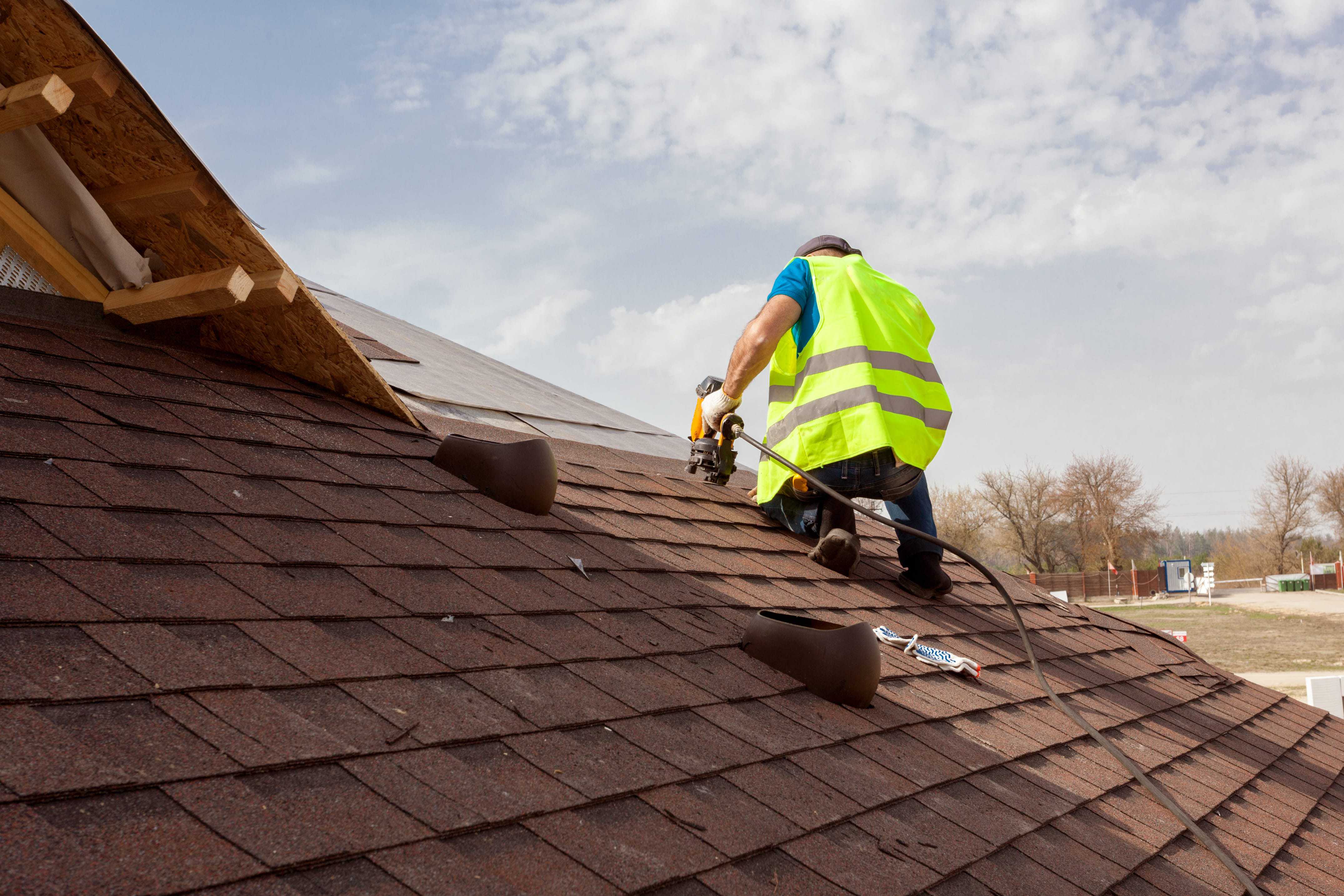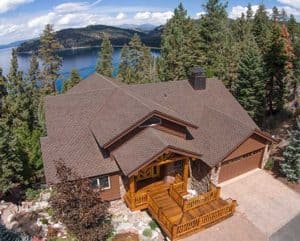Over the past century, asphalt roofing manufacturers have used research and technology to improve the aesthetics, durability, versatility and performance of asphalt products and address specific roofing issues. Asphalt shingle, modified bitumen and built-up roofing (BUR) systems provide superior protection for any building. Find the unique option that will meet your project requirements and aesthetic preferences.
Types – 1
Steep Slope Products
Strip Shingles — about three times as long as they are wide. Manufactured in both standard and metric dimensions, strip shingles are distinguished by the number of cutouts or tabs they have. The most common type of strip shingle is the “three-tab” shingle. You can achieve different textural and lighting/shadowing effects with strip shingles depending on the number, shape and alignment of the cutouts.
Laminated Shingles — contain more than one layer of tabs to create extra thickness. They are also called three-dimensional or architectural shingles because they give your roof the visual depth and beauty of a custom look. It’s no surprise laminated shingles are a favorite among builders, roofing contractors and homebuyers.
Interlocking Shingles — designed to mechanically fasten to each other, and are used to provide greater wind resistance. They come in various shapes and sizes providing you with a wide range of design possibilities.
Large Individual Shingles — generally rectangular or hexagonal in shape, and do not use cutouts or tabs.
Low Slope Products
WHAT IS MODIFIED BITUMEN?
Modified bitumen sheets are composed primarily of polymer modified bitumen reinforced with one or more plies of fabric such as polyester, glass fiber or a combination of both. Assembled in factories using high quality control standards, modified bitumen sheets are made to have uniform thickness and are manufactured to have consistent physical properties throughout the sheet.
The finished roofing membrane may consist of one or more modified bitumen sheets, or may be comprised of a combination of built-up roofing (BUR) felts and one or more modified bitumen sheets. The type of substrate and the performance objectives influence the specification of the modified bitumen membrane system.
Asphalt used in manufacturing modified bitumen systems is generally modified with one of two modifiers: Atactic Polypropylene (APP) or Styrene Butadiene Styrene (SBS). These modifiers create a uniform matrix that enhances the physical properties of the asphalt.
BENEFITS OF APP MODIFIED BITUMEN
APP is a thermoplastic polymer that forms a uniform matrix within the bitumen. This matrix increases the bitumen’s resistance to ultra-violet light, increases its flexibility at high and low temperatures, and increases its ability to resist water penetration.
BENEFITS OF SBS MODIFIED BITUMEN
SBS-modified bitumen membranes resist water penetration while exhibiting superior elongation and recovery properties over a wide range of temperature extremes. This high-performance benefit makes them exceptionally durable and particularly applicable where there may be movement or deflection of the underlying deck.
SELECTING THE RIGHT SYSTEM FOR YOU
To obtain the best roofing system possible, the designer, building owner and contractor should understand the dynamics of the roof as well as the roofing system when specifying either APP or SBS modified roofs. For more information on how to select the proper system, please contact ARMA.
WHAT IS BUILT-UP ROOFING?
Built-Up Roofing (BUR) consists of multiple layers of bitumen alternated with ply sheets (felts) applied over the roof deck, vapor retarder, and (most often) insulation.
BUR roofing systems are particularly advantageous for flat or low-sloped applications. The heart of the system is the membrane which includes the layers of bitumen, which is applied hot, and the reinforcing plies of roofing felt.
With today’s technological advances in asphalt science, cold bitumen adhesives can be used in lieu of hot asphalt.
BUR roofing systems have had a long-standing popularity, due in large part to the success and proven reliability of BUR. The stock of 20, 30 and 40-year-old BUR roofs still in excellent condition attests to this fact.
BENEFITS OF BUILT-UP ROOFING
- Multi-Layer Protection — the multiple layers of bitumen and bitumen saturated “felts” make a water-resistant barrier capable of providing many years of reliable protection from the elements
- Thermal Performance — Built-up roofing systems exhibit exceptional resistance to the conduction of heat between the exterior and interior of a building, resulting in noticeable reductions in heating and cooling costs.
- Fire and Uplift Resistance — Built-up roofing systems are tested through Underwriters Laboratories and Factory Mutual Research Corporation to meet very strict fire resistance requirements and ensure adequate uplift
resistance under extreme wind conditions. - Economy — Compared to other high performance commercial roofing systems, built-up roofing is one of the best investments on the market due to its competitive cost per year of expected service life.







